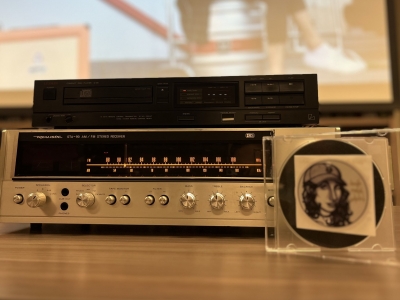
When Carleton University made the decision to deliver courses online for the 2020/21 academic year, journalism professor Aneurin Bosley was faced with the problem of how to deliver a traditionally lecture-based ethics course to nearly 120 third-year students.
“Gathering 115 students around a Zoom meeting for a couple hours each week didn’t seem like the best fit for this course,” said Bosley.
Thanks to a Students as Partners Program grant from the university’s Teaching and Learning Services, Bosley had valuable help from John MacGillis, a fourth-year student in the Bachelor of Journalism program who’d taken the course — Media Ethics in a Digital World — the year before.
The SaPP initiative was devised to pair faculty members with student advisors in the construction and delivery of select courses.
“Partnering with students in the development of the teaching and learning environment,” states the university’s overview of the program, “is a meaningful opportunity to develop important academic and transferable skills as well as fostering a student-centered learning environment.”
The program allocates about $2,000 per academic term to the student partner — 130 hours of paid time to conduct research, planning and co-management of the course with the instructor —for each successful application.
With a fairly large number of students across many different time zones, Bosley and MacGillis decided early in the summer to try a mostly ‘asynchronous’ model, where the students and the instructor would not all meet in real time. But the interactivity would be a challenge.
“Having taken the course last year, I already knew the value of having conversation and interaction in the ethics course, so I thought it was important to be mindful of including that in an online version,” said MacGillis, who heard a similar message when he interviewed academics and instructors with experience in online course delivery.
“One thing that you have to remember is that regardless of how the course is being delivered, interactivity is pivotal to not only student engagement, but also student success,” said Elizabeth Murphy, a retired professor in the faculty of education at Memorial University of Newfoundland.
Professor Samuel Freedman of the Columbia University School of Journalism said that building a community was important to the success of any class.
“I have found without being able to see your class face-to-face, you need to form some kind of connection or it will be difficult to see if your teaching is resonating with the students,” said Freedman.
Professor Eduardo Ordonez-Ponce of Athabasca’s MBA program has found that student collaboration and group work can be effective in an online environment, and may even have some advantages in an asynchronous course.
“By taking a module-based approach and asking students to work together on case studies, you give student flexibility and discussion, while not being as limited as they could be in a synchronous environment,” said Ordonez-Ponce.
Bosley and MacGillis settled on a model of interaction in which students would choose from a set of research projects that they would investigate in groups of roughly five. The research would be based on assigned readings, pre-recorded lectures, real-time meetings with the instructor (which is very manageable for groups of five or six) and, in some cases, interviews with subject matter experts.
On a pre-determined date, the groups would present the results of their research in a discussion forum, which is one of the features of Carleton’s online education system. Over the course of the following week, other students in the course – plus the instructor – comment on the project, ask questions and exchange ideas in a format that will be familiar to anybody who uses more text-based social media platforms.
“This has been an experiment and I think the students may have found it a little odd at first,” said Bosley. “But I’ve been extremely impressed with the quality of the projects and of the discussion that has unfolded in those forums.”
Bosley was very grateful to have the help of a student during the planning for the course.
“John’s help on this was just invaluable,” said Bosley. “The Students as Partners Program is a wonderful opportunity – for students and faculty.”
Thursday, February 4, 2021 in General, Journalism News
Share: Twitter, Facebook



